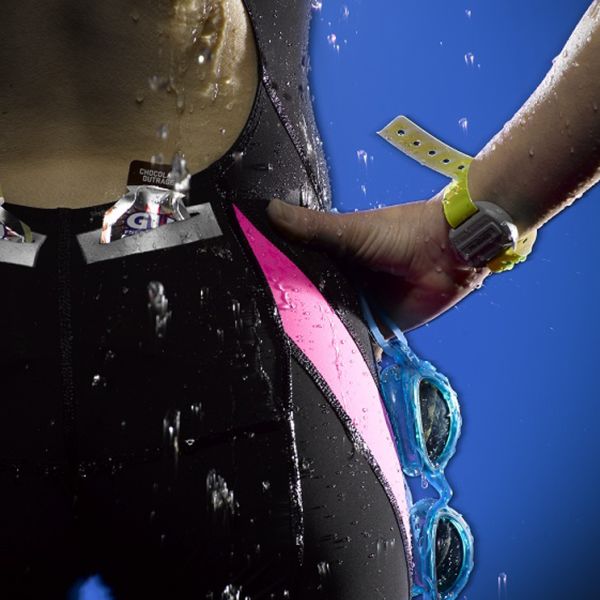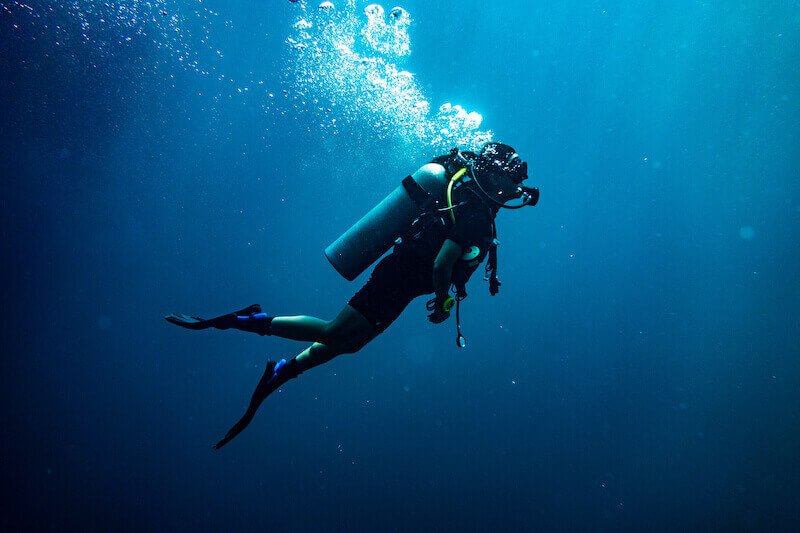The thin layer of water trapped between the wetsuit and skin heats up and keeps you warm, but that doesn’t mean adding an insulating layer in between will make you colder. There’s a reason many semi-dry wetsuits now have a fleece liner. That said, everything needs to fit tightly as the flushing is the main contributor to how warm you are.
You are using an out of date browser. It may not display this or other websites correctly.
You should upgrade or use an alternative browser.
You should upgrade or use an alternative browser.
Cold water & wet suit
- Thread starter anthonylud
- Start date
Please register or login
Welcome to ScubaBoard, the world's largest scuba diving community. Registration is not required to read the forums, but we encourage you to join. Joining has its benefits and enables you to participate in the discussions.
Benefits of registering include
- Ability to post and comment on topics and discussions.
- A Free photo gallery to share your dive photos with the world.
- You can make this box go away
rrw1987
Registered
Hey man,Want to try cold water diving with wet suit (please don't suggest "use dry suit", that's not the point). So what is, exactly, the cold water wet suit set-up, in addition to the wet suit itself? Gloves, boots, any special undergarments? Please share your experience. Thanks!
This is a very good but slightly open ended question. Cold tolerances are fairly personal but here is my experience: I dove wet for a little while in Cape Ann Massachusetts. Sometimes it was good other times it was really miserable. How cold are you really talking? When the water in the 40's F when the air temp is 60 F or above doing one or two tank shore dives is fine a 7mm. When the water dips into the high 30's F and the air temp is below 32F. That was a ******* suffer fest for me in a wetsuit and I only wanted to do one tank and definitely not a 2 tank boat dive. Also are you doing decompression? How long are your dives? How much diving do really intend to do in very cold water (4 dives every week in the winter is very different then 1 dive per month in terms of tolerating discomfort) How much body fat do you have (I have dove at both ends of this spectrum and found this makes a significant difference)? Do you have a place you can get protection from the wind and warm up between dives?
Things that helped me when I dove wet in cold water:
- Stay warm when getting into your wetsuit. If the air is really ******* cold find somewhere warm to put your wetsuit on.
- 3 fingered mitts made a world of difference
- Hot water in the wetsuit in between dives I used a 4 gallon container with flexible tubing that could be snaked into my suit (I don't think you can do this if you are doing decompression dives)
- Vaseline on exposed face skin so you don't get frostbite when you come out of the water (make sure you clean it off after it's not good for your mask skirt)
- Also make sure your wetsuit is fairly new and fits perfectly If necessary get a custom one made, if the water is cold I would not let money factor into your decisions about exposure protection in any way
surewell i guess they are wrong than. Could you explain how the " old wives tales is incorrect ?

wetsuit
A wetsuit is a special suit worn by people who want to spend a lot of time in the watereducation.nationalgeographic.org

How does a wetsuit keep you warm? - Custom Wetsuits Blog
Maybe you are wondering how to keep warm underwater? The answer to your question is neoprene. But how does this wetsuit keep you warm!www.custom-wetsuits.com
many new divers (including myself) were told that a wet suit keeps you warm by trapping water inside the suit between the neoprene and your body.
your own body heat then warms that water and thats what keeps you warm.
this is of course nonsense.
everyone knows that anytime your skin gets wet, your body looses heat. water is NOT an insulator. even warm water is NOT an insulator.
why else would they have developed the "dry suit", and dry gloves etc.
the neoprene is the insulator. and in a perfect world, if we could keep 100% of the water out, then that is as efficient as the suit can possibly be.
so ask yourself which wet suit would be warmest?.......
1 - a 7mm thick suit that does not fit quite right, has poor arm and leg water dams or some type of seal system, a separate hood with no neck seal system at all, and does not have glued and blind stitched seams
or
2 - that same 7mm thick suit that fits your body like a second skin, has some type of arm and leg water dams or seals (like my old Bare velocity did), an attached hood, and has fully glued and blind stitched seams
remember, if the suit lets water in, it will also let that water out.
so when you are diving, swimming, and moving around etc in the water, the water that is in the suit that is supposed to keep you warm, ends up getting pushed out and replaced with cold water. this what i call "flushing".
now does this make a huge difference when diving a 3mm wet suit in 84F water? maybe not, but it is certainly a far bigger problem when diving in 40F water.
stevel97
Registered
A one piece suit like the Aqualung Solaflex works well enough for temps in the mid-fifties. They call it a semi dry but make no mistake about it, you will get thoroughly wet.
Proper fit is key.
Proper fit is key.
There are some materials that allegedly retain thermal protective properties when wet, I believe merino is one of them, however , I would have thought that whatever is gained in that respect would be more than lost by increased flushing within the suit. This is why open cell works so well, it forms seal against the entire body.
I have the pinnacle merino thermals, they're great topside and do nothing under a wetsuit. They were sold as drysuit undies so I guess pinnacle knows about flushing too.
Richard Dayan
Contributor
Don't forget chemical reuseable heat packs they are good for wet suits, throw a couple in the suit 10 minutes before dive.
Richard Dayan
Contributor
Xcel makes great dive suits, my favorite is the 5/4 tactical thermoflex, very comfortable suit.
Both are requirements. Insulation- ditto. Without insulation it doesn't matter how much the trapped watter gets warm.sure
many new divers (including myself) were told that a wet suit keeps you warm by trapping water inside the suit between the neoprene and your body.
your own body heat then warms that water and thats what keeps you warm.
this is of course nonsense.
everyone knows that anytime your skin gets wet, your body looses heat. water is NOT an insulator. even warm water is NOT an insulator.
why else would they have developed the "dry suit", and dry gloves etc.
the neoprene is the insulator. and in a perfect world, if we could keep 100% of the water out, then that is as efficient as the suit can possibly be.
so ask yourself which wet suit would be warmest?.......
1 - a 7mm thick suit that does not fit quite right, has poor arm and leg water dams or some type of seal system, a separate hood with no neck seal system at all, and does not have glued and blind stitched seams
or
2 - that same 7mm thick suit that fits your body like a second skin, has some type of arm and leg water dams or seals (like my old Bare velocity did), an attached hood, and has fully glued and blind stitched seams
remember, if the suit lets water in, it will also let that water out.
so when you are diving, swimming, and moving around etc in the water, the water that is in the suit that is supposed to keep you warm, ends up getting pushed out and replaced with cold water. this what i call "flushing".
now does this make a huge difference when diving a 3mm wet suit in 84F water? maybe not, but it is certainly a far bigger problem when diving in 40F water.
But, as most wetsuits (and to some extent semy-dry/semy-wet), they tend to get wet in the inside. That's true, because otherwise they would be called dry suits. Now, this water, if it constantly keeps rushing in and rushing out, that is a very effective cooling engine. And that is the reason they teach you- and everyone will tell you- that a wetsuit has to have a good, tight fit. Not too much to impede movement or breathing, but to minimize exchange of water.
So, a good wetsuit you barely feel the water seeping at beginning of dive, and you know it is doing its job if you don't keep constantly having cold water getting in through the zipper, or when you move your arms and water rushes to freeze your armpits- and the worst is if you turn your head a small wrinkle opens and cold water freezes your spine.
So yes, you waste some energy to warm initial amount of water and if the suit is good, it will keep warm throughout the dive, thanks to insulating layer of neoprene. I think the term is insulation and minimum convection?
Dry suit reduces water convection to zero because there is no water, but without insulation it is as cold as a bad wetsuit so we add insulation garments and it has the cost of extra buoyancy, extra weight needed. Pluse other nuisance of drysuit, this maybe why these aren't as popular as wetsuits yet. And they cost much more too..
Some manufacturers also add a thin layer of whatever they call it these days a reflective layer to reduce also radiating heat, but I think compared to convection and insulation this is a second order effect in water, more gimmick. This method is used in space where there are no particles to move the heat, the main source of insulation is a reflective layer.
tldr as long as small amount of water is trapped within insulating layer, it keeps you warm.
Macfod
Registered
when I started diving in early 2000 in UK my suit was a 5mm wetsuit.hot showers were necessary afterwards..lwhen moving to NZ in 2006 no one was diving in dry suits..and you couldn’t buy them in South..lots of red legs after dives 
Similar threads
- Replies
- 25
- Views
- 2,172




